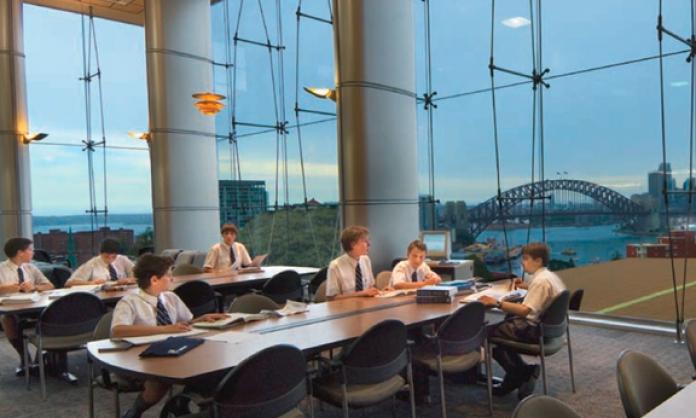Private schools around the country are competing for students by pouring tens of millions of dollars into lavish buildings and upgrades. The audiovisual “imaginarium” at Carey Baptist Grammar and $20 million Artemis Centre under construction at Melbourne Girls Grammar are just two of many such projects around the country.
The projects are designed to make elite schools appear just that touch more special to parents tossing up which institution to spend their education dollars at. The Artemis Centre was designed by a team of female architects as “the epicentre of the wellbeing agenda” of Melbourne Girls. Recognising the pressures of a life lived in leafy South Yarra, the school hopes the centre will help it ensure that “our girls are flourishing and developing a mindset for managing their wellbeing”.
And spare a thought for the students of Sydney’s Shore. Never in its 100 year history has the private school’s pool been large enough for the water polo team to practise there. Fortunately, in one of the state’s biggest development projects, a $50 million upgrade to facilities will rectify this situation.
Soon, students at Ballarat’s Clarendon College will be able to get that “real river” experience without leaving the school grounds – in their motorised rowing tank, currently under construction.
Students in more disadvantaged schools are less likely to see such inspiring innovation and more likely to see broken bits of building falling off other bits. Teachers report classrooms with blackboards that are held to the wall with tape and ceiling fans that can’t be turned on because they are at risk of flying off the ceiling.
Governments are working hard to maintain and extend this gap. Some of Victoria’s most elite and well-resourced private schools have had their funding increased at fully eight times the rate of needy public schools, according to Trevor Cobbold, an economist and convener of the public education campaign group Save Our Schools. “Between 2009-10 and 2013-14, real funding for public schools per student fell by 3 percent while private school funding increased by 10 percent”, he said.
Compounding this funding discrepancy are the high entry fees and alumni contributions that private schools receive separately, making the annual income of wealthy schools soar above that of most public schools.








